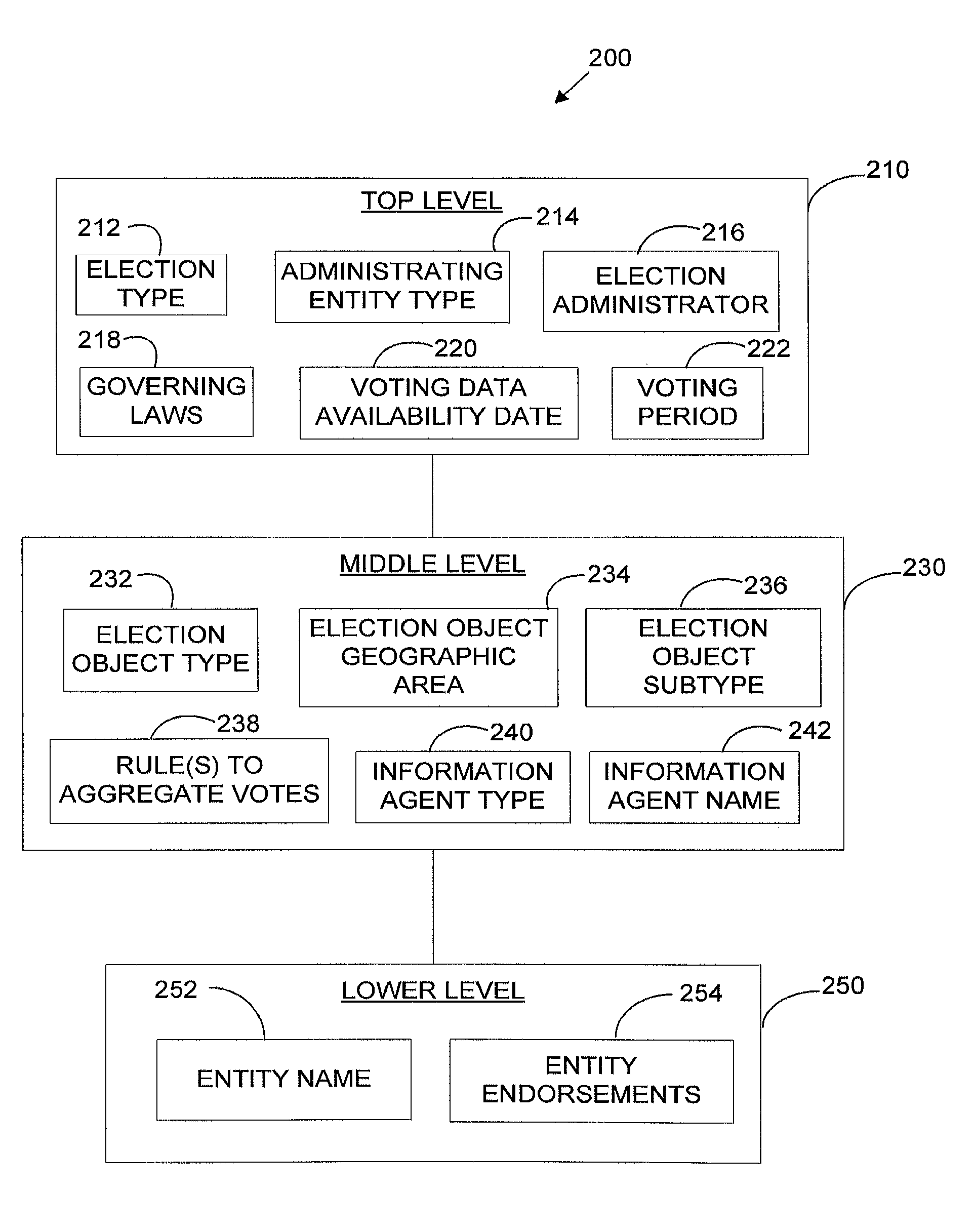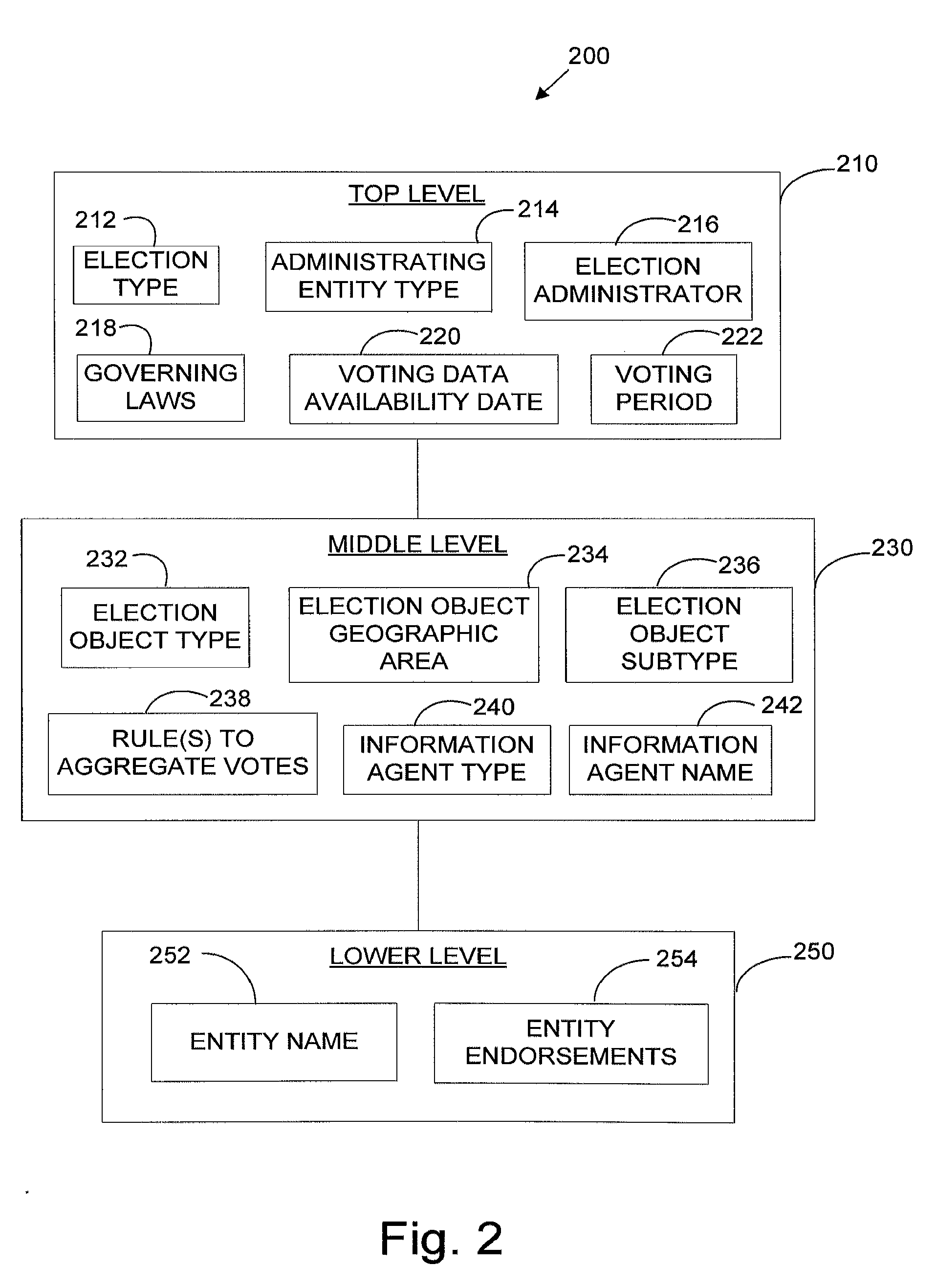Methods and apparatus for integrating electoral data and electoral interfaces
a technology of electoral data and interfaces, applied in voting apparatuses, instruments, computing, etc., can solve the problem that the information agent cannot be sure how the voter actually voted, and achieve the effect of reducing the cost of information
- Summary
- Abstract
- Description
- Claims
- Application Information
AI Technical Summary
Benefits of technology
Problems solved by technology
Method used
Image
Examples
Embodiment Construction
[0031]In many elections the same entity (e.g., an election administrator) controls the ballot data (e.g., which candidates are eligible to be shown on the ballot) and the ballot interface (e.g., the order in which candidates are listed on the ballot). Often the election administrator is directly or indirectly appointed by elected officials who have a self interest in using the ballot to erect barriers to political competition. For example, representatives of the major political parties may be given a privileged position on the ballot, and it may be made prohibitively costly for representatives of other political parties to secure access to the ballot. The self-evident conflict that election administrators have in designing ballots may also prevent them from integrating much useful information into a ballot interface, such as legislative records, candidate speeches, voter reviews, and press reviews.
[0032]Even when an election administrator has no conflict of interest in designing a b...
PUM
 Login to View More
Login to View More Abstract
Description
Claims
Application Information
 Login to View More
Login to View More - R&D
- Intellectual Property
- Life Sciences
- Materials
- Tech Scout
- Unparalleled Data Quality
- Higher Quality Content
- 60% Fewer Hallucinations
Browse by: Latest US Patents, China's latest patents, Technical Efficacy Thesaurus, Application Domain, Technology Topic, Popular Technical Reports.
© 2025 PatSnap. All rights reserved.Legal|Privacy policy|Modern Slavery Act Transparency Statement|Sitemap|About US| Contact US: help@patsnap.com



